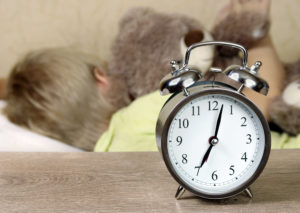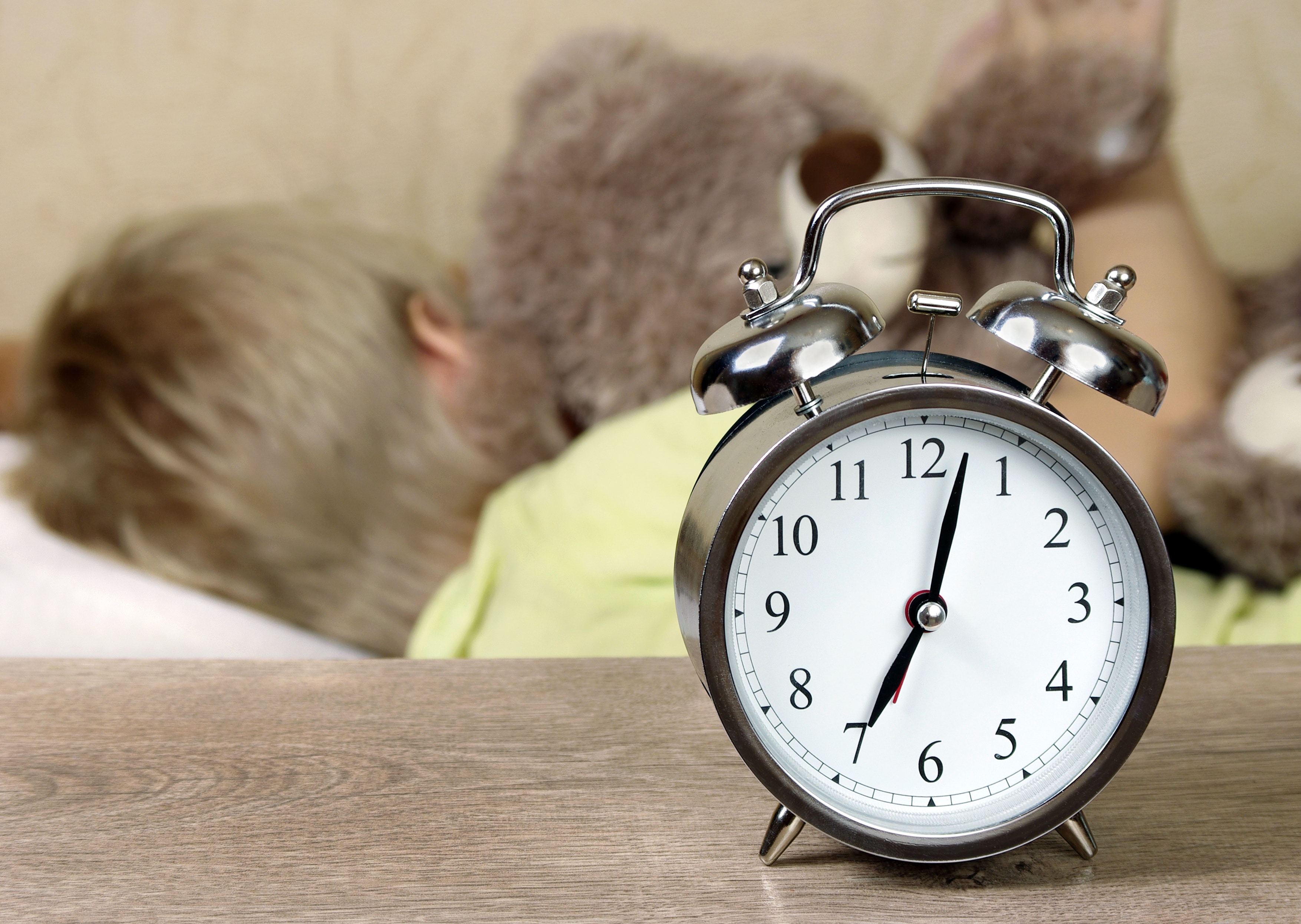Spring Forward – by Kate Swanson of Minneapolis, Minnesota
 It’s that time again! In many parts of the USA, we are headed into Daylight Savings Time (DST) on March 10, 2019.
It’s that time again! In many parts of the USA, we are headed into Daylight Savings Time (DST) on March 10, 2019.
For those of us living in these areas, this can be an exciting, yet anxious time. We are feeling like there is an end in sight to our Winter season and the sunlight is beginning to peak through once again. Spring is around the corner and this is fantastic news, but anxiety kicks in as we lose an hour and this can often throw a wrench in our sleep schedules.
What is the best way to tackle the DST time change for our little ones?
-
Do Nothing
If your child is a good sleeper and takes to change quickly/easily, you don’t need to worry. Change your clocks ahead an hour (as we “Spring forward”). Your child, who usually wakes at 7 am, may “sleep in” until the clock says 8 am. Just let the natural flow of their body clock (circadian rhythm) do its thing through the natural occurrence of light & dark, social interactions, and mealtimes will help it come together. You can go in and allow lots of natural sunlight to stimulate the start of the day. Watch for those sleep cues and awake times throughout the day and adjust accordingly so you avoid reaching an overtired state. Within a week, if they are great sleepers already, they will have adjusted on their own.
-
Quick Shift
This is for our little ones who can transition after just a little bit of practice. Change your clocks forward. Enjoy “sleeping in” for today LOL so your 7 am wake up will now be 8 am. Move all your naps, meals, and bedtime earlier by 30 minutes. After a few days on this schedule: Repeat. Shift earlier again by 30 minutes, so everything will be back on track according to the clock and your child will follow suit with practice. (You can also do this ahead of time before the clock change if you’d like!)
Old Schedule : Wake at 7:00am – Nap at 12:00pm – Bedtime at 7:00pm
In DST Time : Wake at 8:00am – Nap at 1:00pm – Bedtime at 8:00pm
Day 1: Wake at 8:00 am – Nap at 12:30 pm – Bedtime at 7:30 pm
Day 2: Wake at 7:30 am – Nap at 12:30 pm – Bedtime at 7:30 pm
Day 3: Wake at 7:30 am – Nap at 12:00 pm – Bedtime at 7:00 pm
Day 4: Wake at 7:00 am – Nap at 12:00 am – Bedtime at 7:00 pm
Back on schedule: Wake at 7:00 am – Nap at 12:00 pm – Bedtime at 7:00 pm
-
Gradual Shift
If your little one struggled with the last time change this may be your best route. You can start this one now even before the time change is official! We are going to shift their schedule back by 15 minutes each day. (If you have a child who transitions very slowly you can take 2-3 days for each shift if needed.)
Old Schedule : Wake at 7:00 am – Nap at 12:00 pm – Bedtime at 7:00 pm
Day 1: Wake at 6:45 am – Nap at 11:45 am – Bedtime at 6:45 pm
Day 2: Wake at 6:30 am – Nap at 11:30 am – Bedtime at 6:30 pm
Day 3: Wake at 6:15 am – Nap at 11:15 am – Bedtime at 6:15 pm
Day 4: Wake at 6:00 am – Nap at 11:00 am – Bedtime at 6:00 pm
DST Change your clocks: Wake at 7:00 am – Nap at 12:00 pm – Bedtime at 7:00 pm
What are the best tools to help you survive DST?
- A visual cue to help with time – these will depend on your child’s age
Older children: Use a Digital clock. Make a chart of wake up time, nap time, bedtime. Ask them to remain in bed, in their rooms until your desired wake up and help them prepare for when to expect the next sleep time.
Toddlers: Use a type of visual color change clock for those toddlers to visually know when it changes color it is okay to wake up or time to go to sleep.
Infants/Toddlers/Children/Adults: Blackout those windows! Keep sleeping spaces completely dark during sleep times and turn on the lights/let in the sun when it is time to be awake. Using blackout blinds, blackout curtains, or even aluminum foil directly attached to the windows will block that sunlight at bedtime and at naps to help with that internal reaction which begins your natural melatonin production. Also spending that awake time in the bright natural light will help the body’s internal body clock adjust. - White Noise – Use a constant, dull, and boring sound to drown out the activity noises that will occur in the house or outside when it is sleep time for your little one. There are lots of products out there for this or you can use a standard radio tuned into static.
- Routines! Keep your pre-sleep routine the same so that they can understand: “When this happens” → “It is time for sleep”
No matter what, be patient! Give it time as your little one adjusts. Remember to keep your consistency in your interactions during sleep times and remain calm. Within a week or two everything should be back on track. If you are struggling with sleep issues now even before the change or you have tried for several weeks after the time shift and things are still way off course, you may need some additional guidance from us to get everything on tack so reach out!
We are here for you – Sign up for a Free 15 minute Consult today!
Happy Spring!


Recent Comments